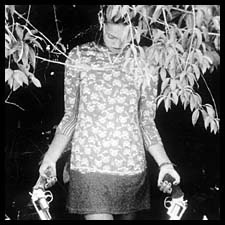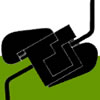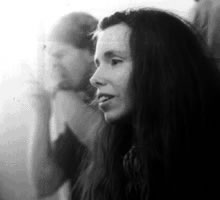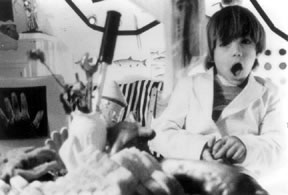|
March 19th, Wednesday, 8:00PM
Balagan Presents:
(in association with Mass College of Art Film Society and the Film Study Center at Harvard University)
Peggy and Fred in Hell (1985-present) 90 minutes
By Leslie Thornton Director in attendance

 LOCATION: Carpenter Center, Harvard University. LOCATION: Carpenter Center, Harvard University.
24 Quincy Street, Cambridge, MA 02138
Tickets: Suggested donation $7
Many claim that the Peggy and Fred in Hell series (1985-1996 and beyond) is the most striking and influential aspect of Leslie Thornton's creative work (to cite Bill Krohn's 1993 review in Cahiers du cinéma: "[Thornton's] place in cinema history has already been assured for the sole reason that she is the author of Peggy and Fred in Hell.") Peggy and Fred has been described by Thornton herself as a lifetime project. Peggy and Fred is in many ways exemplary of Thornton's method and technique. Like many of her films, it makes sustained use of found footage, integrating the material within her film to give it a unique inflection, producing a new readability. It also and paradoxically makes use of an approach of "improvisation," a constant receptivity to the contingencies of the very process of filmmaking and of the aging process of her subjects (two young children at the start of her project who have since grown to young adulthood). Finally, it refuses to acknowledge the traditional notion of the boundary or frame constituted by the finished work, reveling instead in the interminability of process.
 Director Biography Director Biography
Leslie Thornton has long been considered a pioneer of contemporary media aesthetics, working at the borders and limits of cinema, video and digital media. Such seminal works as her ongoing series Peggy and Fred in Hell (1985- ) operate in the interstices between various media-forms, oftenusing simultaneous, interacting projections of film and video to address both the architectural spaces of media, and the imaginary spaces of the spectator's involvement. Thornton uses the process of production as an explorative process, a collective endeavor “position(ing) the viewer as an active reader, not a consum er.” er.”
She is a contemporary of such fellow explorers as Chris Marker, Chantal Akerman, Gary Hill, Michael Snow, Alan Sondheim andHarun Farocki, all artists who are opening up new spaces for media, re-mapping its boundaries within the projective spaces of the museum or gallery as well as within the public spaces of the cinema, television and internet transmission. Thornton's career to date has been a unique and unusual one. She was one of the first artists to bridge the boundaries between cinema and video, to explore their complicities and resistances, and to embrace their differences as positive, and even complementary, attributes.
Thornton's complex articulations are both edifying innovations in media form and content and tacit deconstructions of the principles, presumptions and promises of technically reproducible artworks. Her projects are ongoing and provisional, and she had been unafraid to return to, andrework, and rethink, issues, topics, subjects. Her works have had a profound impact, and an enduring influence on an entire generation of media artists, critics and theorists. |
